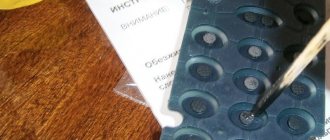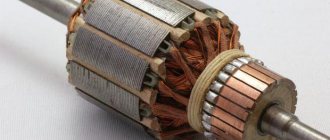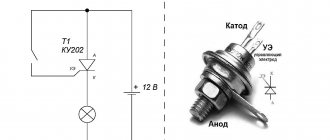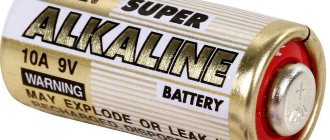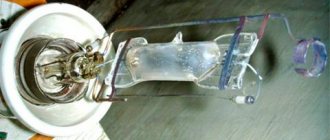Although a car battery is not officially recognized as a consumable, in fact it is really a device whose service life is not that long. And if used incorrectly, it can be reduced by half or three times that stated by the manufacturer. But a battery that has lost the ability to charge from a generator does not always need to be thrown away - in some cases it can be revived, and many ways to achieve this have been invented.
Which batteries are appropriate to refurbish?
Restoring a car battery may be useless if, during operation, they were subjected to serious mechanical stress, leading to irreversible consequences such as destruction of the plates or cracking of the case. Repeated high current loads can also “kill” the battery beyond repair. It makes no sense to begin resuscitation operations if the plates have fallen off, if there has been an internal short circuit, if the battery is swollen - in such cases, the only justified procedure would be to scrap the battery.
Features of lead-acid batteries
This variety has been used for a long time and is time-tested. Even today, the lead battery, whether for a flashlight or a car, is receiving improvements and modernization. Here are his positive qualities:
- low level of self-discharge;
- undemanding to maintenance;
- no memory effect;
- if necessary, produces greater current output;
- affordable because it is easy to manufacture.
But it was not without its drawbacks:
- cannot be stored unloaded;
- sensitive to negative temperatures;
- small capacity (relative to weight);
- does not tolerate deep discharge well;
- environmentally hazardous (lead compounds).
A lead-acid battery consists of the following main elements:
Battery device.
- electrodes: lead grids with lead dioxide in cells;
- separation plates that do not react chemically with acid;
- electrolyte where the grids are immersed;
- housings.
In the 1970s, a new technology for producing lead batteries appeared - AGM (Absorbent Glass Mat). In the power source, instead of the usual liquid electrolyte, it is absorbed. Such batteries: are sealed, do not require maintenance, serve for a long time if properly charged, tolerate cold well, charge 2-3 times faster and have a self-discharge even lower than in classic batteries.
DIY ways to restore a car battery
But if the battery does not work well due to natural age, do not rush to throw it away - you can try to revive it, and the results can be quite encouraging. If you're lucky. You will be able to use the battery for about a year - you agree, this is a lot, considering the cost of these power sources.
In the countries of the former USSR, maintenance-free lead-antimony batteries are in no hurry to give up their positions. Although their average service life is shorter than that of maintenance-free batteries, they also cost significantly less. And since their design implies much greater maintainability, we can conclude that they will not soon disappear from our cars.
Let's look at the most common ways to restore the functionality of such batteries.
Repeated charging method
When it comes to how to restore an old car battery, this procedure is worth trying. Its main feature is the use of a low nominal charging current.
The essence of the method is that the memory should work intermittently. They are needed so that the potential difference on pairs of electrodes, which are lead plates, has time to level out. When using low currents, this procedure is safe and not considered destructive. The main effect is achieved by redirecting high-density electrolyte from the plates into the free space between the electrodes.
If poor battery performance is due to density variations in the banks, this method will be very effective.
During the charging process, the car owner must ensure that the voltage in each jar reaches 2.4 V, and the density of the sulfuric acid solution is equal to the nominal value. The main thing is to remember that the car battery needs to be given a break, during which the electrolyte is redistributed. The minimum that will allow you to reanimate the battery in this way is 8 charge-rest cycles.
Electrolyte replacement
You can revive a car battery at home in such a trivial way as completely replacing the sulfuric acid solution - during long-term use, the liquid becomes clogged with particles that significantly reduce its electrical conductivity; replacing it with a new electrolyte. As practice shows, replacing the fluid can revive such a battery.
After draining the liquid in compliance with all necessary safety measures (work in rubber gloves, a rubberized apron, safety glasses), the body must be rinsed, preferably with heated distilled water, and then with an aqueous solution of soda at the rate of 3 teaspoons of soda per 100 ml. distillate.
The latter must first be boiled, poured in and allowed to stand for about half an hour. After this, the liquid is drained and washed again with clean water.
It has been proven that this technique can be used for different types of batteries. After washing, the required portion of electrolyte is poured in (10-15 mm above the level of the plates) and the battery can be charged for about a day.
But that’s not all - over the next 10 days you will need to charge the battery for another 6 hours, and the voltage should be between 14-16 V, and the charging current should not exceed 10 A.
Restoring battery charge in distilled water
You can try to restore an old car battery with your own hands in this not entirely traditional way. If you're lucky, you'll be able to use the reanimated battery within an hour.
Before using the method, a discharged battery must be charged to the maximum, then drain the electrolyte, and then rinse the battery with water, preferably distilled.
In principle, flushing can be carried out according to the multi-stage scheme described above, it all depends on your financial capabilities, availability of free time and desire. But remember that the better the flushing, the better the battery will be restored.
So, after washing, you need to pour distillate into the battery case, and then add a special solution consisting of ammonia and Trilon (ammonia needs 5% of the volume of liquid, Trilon - 2%). This solution initiates the desulfation process. The duration of the procedure is at least an hour.
During battery recovery, gas may be released, a process similar to boiling of the electrolyte. Boiling may be accompanied by splashes, but the liquid and gases released are not dangerous to humans, unlike a sulfuric acid solution. But since ammonia has a very strong odor, it is advisable to work in a ventilated area.
When gas evolution stops, this will indicate the end of the desulfation process of the plates.
All that remains is to drain the special solution and thoroughly rinse the battery with distilled water, repeating the procedure several times. Now you can start filling in new electrolyte and charging the car battery.
As you can see, the procedure is simple, even beginners can do it. The main thing is to work carefully with the electrolyte so as not to get chemical burns.
Reverse charging
Another proven way to properly restore the capacity of a car battery is to change the charging polarity. To do this, you will need a sufficiently powerful voltage source providing a current of 80 A and a voltage of at least 20 V (for example, a welding machine).
The charging process itself should last no more than 30 minutes; the electrolyte will boil vigorously. After such an “incorrect” charging, you need to drain the old electrolyte, thoroughly rinse the jars many times and replace the solution with a fresh one, then charge it in the usual way for 24 hours.
You need to be prepared for the fact that car battery restoration is not always successful. In some cases, the battery can actually last a long time, from several months to two years, but it is possible that within a week or even the next day it will again be inoperative.
The final result depends on many factors: under what conditions the battery was used, how large the load was in the form of connected electrical equipment, whether there were cases of deep discharge or long-term recharging, whether it was subjected to mechanical stress, etc.
Much depends on the charger used. Its serviceability is the main condition, otherwise, instead of benefiting your battery, final and irreparable damage will be caused.
What causes the battery to fail?
All reasons can be roughly divided into three categories:
- manufacturing defects;
- natural wear and aging;
- violation of operating rules.
That is, in the third case, the battery could still serve, but it was artificially destroyed. Fortunately, it is not always irrevocable.
External faults
The battery case is quite durable, but it can also be destroyed by impacts and falls. The electrolyte begins to flow out, reacting intensely with the surrounding metal and paint coatings. The losses can be much worse than just the cost of a new battery.
The tightness of the housing can be restored by using adhesives, compounds or welding plastic. But the decision to make such repairs must be made with caution; the consequences have already been mentioned. Whether it’s worth the risk is something everyone decides for themselves, but in the most general case, it’s better not to get involved with repairing a cracked case.
On the subject: What to do if the battery starts to boil when charging?
Battery terminals can also be a source of trouble. A layer of dielectric lead oxide forms on them, and in case of poor sealing, also the same salts that cause sulfation of the electrodes.
All this breaks contact, and even a serviceable, charged battery will not be able to rotate the starter shaft. The terminals require regular cleaning with wire brushes, sandpaper and detergents. After drying, they must be coated with a multi-purpose lubricant; this will protect the lead from oxygen and electrolyte vapors.
Damage inside the battery
Defects associated with electrodes, separators and electrolyte are much more diverse:
- sulfation, that is, the process of formation of insoluble salts of sulfuric acid on the electrodes, preventing the occurrence of chemical reactions during charge and discharge;
- mechanical breakdowns of electrodes associated with their thinning after a long service life;
- reduction in volume and violation of the strength of the active mass of the electrodes;
- destruction of separators and short circuits in banks;
- sludge accumulation and electrolyte contamination;
- gross polarity reversal of the battery when it is connected incorrectly.
Not all problems are irreversible. Sometimes even a maintenance-free modern battery can be revived. Not to mention old batteries, where sets of electrodes were inserted into ebonite cans and filled with bitumen mastics on top. If desired, such a battery could be made to last forever by performing regular repairs.
A way to quickly revive a battery after a deep discharge
You can completely restore a dead battery after a deep discharge using the charging method described above using an ammonia solution of pharmaceutical distilled water and Trilon. The main condition is fast normal charging of a completely discharged battery.
Let's say you started to start the engine, and the battery was quite capable of turning the crankshaft. But due to problems with the power system, you achieved nothing and drained the battery - if you act promptly, the damage will not be too significant. And if the battery has been left in a discharged state for a night or more, the chances of bringing it back to life will be much lower.
Let us note once again that the duration of the procedure itself is short, only an hour, but after its completion you will need to perform regular exercises, that is, the total recovery time can exceed two days.
Regeneration of acid batteries with cyclic current
Old sulfation that leaves no free space on the plates is especially difficult to remove. Used to restore sediment-clogged AC acid batteries is an effective cleaning method. A sinusoidal waveform has positive and negative periods. The positive energy curve is directed to punching passages to the contact plate. Particles accumulated on the surface are neutralized by periodically sent negative pulses. The effectiveness of pulsed action is superior to other methods used. The electrolyte heats up slightly, the ratio of periods of negative pulses is adjusted depending on the condition of the lead sulfate crust.
| Device characteristics Mains voltage, V | 220 |
| Battery voltage, V | 12 |
| Battery capacity, A*h | 2…90 |
| Secondary voltage, V | 2*18 |
| Transformer power, W | 120 |
| Charging current, A | 0…5 |
| Current pulse, A | up to 50 |
| Pulse power, W | up to 1000 |
| Discharge current, A | 0,25 |
| Charge time during recovery, ms | 1…5 |
| Discharge time, ms | 10 |
| Recovery time, h | 5…7 |
To create a desulfator, you need to modify the existing charger using an electrical circuit.
The pulse desulfator for cycling acid batteries provides an automatic desulfation process using an electronic control circuit located on a printed circuit board.
Only the switch, ammeter, charge current regulator and fuse are located on the control panel.
The device was developed in 1999 and released in a small batch. But it is possible for a technician to modify a regular charger using the circuit.
Restoration result
If everything is done correctly, it will be possible to restore the energy intensity to 70–100% of the original value. At the same time, the plates will be cleaned and turn black, that is, the white coating of sulfate will come off. At the same time, the electrolyte will become cleaner and more transparent.
Car batteries cannot be deeply discharged, but there are ways to restore them, which will help you last until you buy a new power source. To avoid this, it is recommended to adhere to the operating rules, charge on time and do not forget about periodic maintenance.
Recovery with incomplete loss of capacity
If the battery has lost part of its capacity, sulfates must be dissolved to restore it. To do this, you need to apply high voltage and keep it for several hours, with short pauses.
- This method involves the following steps:
- Pour distilled water into the battery;
- Connect to a power source;
- Charge several cycles until a reduction in capacity increase is detected;
After restoring the battery, add a little more water and charge it under low voltage.
Preparation
Before you begin restoring the battery, you need to prepare it - thoroughly wash the surface of the case with detergent to remove any dirt. Afterwards, the condition is visually assessed: there should be no swelling, bulges or damage.
Next, unscrew all the plugs and see if there is electrolyte. If it is missing from some “bank,” check again to see if there are any cracks in the body.
Then they take a flashlight and assess the condition of the plates from the inside - there should be no shedding. At this stage, sulfation will be noticeable in the form of a white coating on the plates.
Distilled water must be added to each “jar” to the level. If possible, measure the density of the electrolyte in each compartment.




